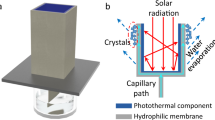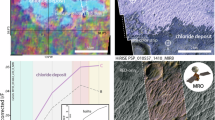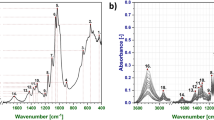Abstract
ALTHOUGH rock salt has been commonly used in the construction of absorption cells for infra-red spectroscopy, it has the inherent disadvantages of being opaque beyond 15 µ, and of being attacked by water. Silver chloride, however, is transparent up to 25 µ and is completely resistant to water.
This is a preview of subscription content, access via your institution
Access options
Subscribe to this journal
Receive 51 print issues and online access
$199.00 per year
only $3.90 per issue
Buy this article
- Purchase on SpringerLink
- Instant access to full article PDF
Prices may be subject to local taxes which are calculated during checkout
Similar content being viewed by others
References
Fugassi and McKinney, Rev. Sci. Instr., 13, 335 (1942).
Kremers, J. Opt. Soc. Amer., 35, 349 (1946). See also Fuoss, Rev. Sci. Instr., 16, 154 (1945).
Author information
Authors and Affiliations
Rights and permissions
About this article
Cite this article
TETLOW, K. Silver Chloride Plates for Infra-Red Spectroscopy. Nature 159, 850 (1947). https://doi.org/10.1038/159850a0
Issue date:
DOI: https://doi.org/10.1038/159850a0



